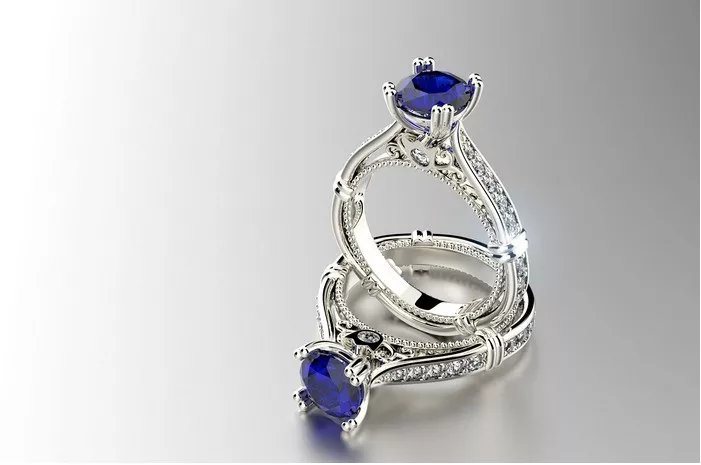Jewelry appraisal is a complex and fascinating field that requires a deep understanding of gemstones, their properties, and the methods used to create or identify them. One of the most intriguing aspects of this field is the ability to distinguish between natural and lab-grown gemstones, particularly when it comes to lab-grown yellow sapphires. This guide aims to provide a detailed, logical, and easy-to-understand introduction to identifying lab-grown yellow sapphires.
Understanding Yellow Sapphires
Yellow sapphires are a type of corundum, which is the mineral that also forms rubies and other colored sapphires. They are valued for their vibrant yellow hues, which can range from pale to intense. Natural yellow sapphires are relatively rare, making them highly sought-after in the jewelry market.
What Are Lab-Grown Yellow Sapphires?
Lab-grown yellow sapphires are created in a controlled environment, mimicking the natural processes that form sapphires. These gemstones have the same chemical composition and physical properties as natural yellow sapphires, making them indistinguishable from the natural variety without specialized equipment.
Methods of Growing Lab-Grown Yellow Sapphires
There are several methods used to grow lab-grown yellow sapphires, each with its own set of characteristics:
High Pressure High Temperature (HPHT) Method: This method involves using high temperatures and pressures to simulate the conditions found deep within the Earth’s crust. It is commonly used to grow diamonds and certain types of sapphires.
Chemical Vapor Deposition (CVD) Method: In this method, a gas mixture containing the necessary elements for sapphire formation is heated to a high temperature, causing the elements to react and deposit on a substrate, forming a sapphire crystal.
Flux Growth Method: This method uses a molten flux material to dissolve the raw materials and then slowly cools the solution to allow crystals to grow.
Hydrothermal Method: This method mimics the natural hydrothermal processes that occur in the Earth’s crust. It involves heating a solution containing the necessary elements for sapphire formation under high pressure and temperature conditions.
Identifying Lab-Grown Yellow Sapphires
Identifying lab-grown yellow sapphires requires a combination of visual inspection, physical testing, and specialized equipment. Here are some key steps and considerations:
1. Visual Inspection
While lab-grown yellow sapphires may be indistinguishable from natural ones under normal lighting conditions, a trained eye can often detect subtle differences in color saturation, clarity, and cut. However, this method is not reliable for definitive identification.
2. Physical Testing
Several physical tests can be performed to help distinguish lab-grown from natural yellow sapphires:
- Hardness Test: Sapphires are one of the hardest minerals on Earth, with a hardness of 9 on the Mohs scale. While this test is not definitive, a sapphire that scratches easily is likely not natural.
- Specific Gravity Test: The specific gravity of sapphires is relatively high, around 4.0. A sapphire with a significantly lower specific gravity may be lab-grown.
- Thermal Conductivity Test: Natural sapphires have a high thermal conductivity. A thermal conductivity tester can be used to measure the heat transfer rate of a sapphire, providing clues about its origin.
3. Specialized Equipment
For definitive identification, specialized equipment is required:
- Spectroscopy: This technique involves analyzing the absorption and emission of light by a gemstone. Lab-grown sapphires often have different absorption spectra than natural ones, providing a definitive way to distinguish them.
- X-ray Diffraction: This method analyzes the atomic structure of a gemstone. Lab-grown sapphires may have slightly different crystal structures than natural ones, which can be detected using X-ray diffraction.
- Mass Spectrometry: This technique can be used to analyze the isotopic composition of a gemstone. Lab-grown sapphires may have isotopic ratios that differ from natural ones, providing another means of identification.
4. Certification and Documentation
Many lab-grown sapphires come with certification from reputable gemological laboratories. These certificates provide detailed information about the gemstone’s origin, treatment history, and physical properties. While certification is not a guarantee of authenticity, it can provide valuable information and peace of mind.
Common Misconceptions About Lab-Grown Yellow Sapphires
There are several misconceptions about lab-grown yellow sapphires that it is important to dispel:
Misconception 1: Lab-Grown Sapphires Are Not Real Sapphires: This is not true. Lab-grown sapphires have the same chemical composition and physical properties as natural sapphires. They are real sapphires, just created in a different way.
Misconception 2: Lab-Grown Sapphires Lack Value: While lab-grown sapphires may not have the same rarity or emotional appeal as natural ones, they still have value. They are beautiful, durable, and can be a more affordable alternative for those who love the look of sapphires but have a limited budget.
Misconception 3: Lab-Grown Sapphires Are Easily Identifiable: This is not the case. High-quality lab-grown sapphires can be indistinguishable from natural ones without specialized equipment.
Conclusion
Identifying lab-grown yellow sapphires requires a combination of visual inspection, physical testing, and specialized equipment. While there are some misconceptions about lab-grown sapphires, they are real sapphires with the same chemical composition and physical properties as natural ones. They can be a beautiful and affordable alternative for those who love the look of sapphires.
Related topic:
- Can Yellow Sapphire Be Worn by Anyone
- Which Shape of Yellow Sapphire Is the Best
- Can Capricorn Wear Yellow Sapphire


